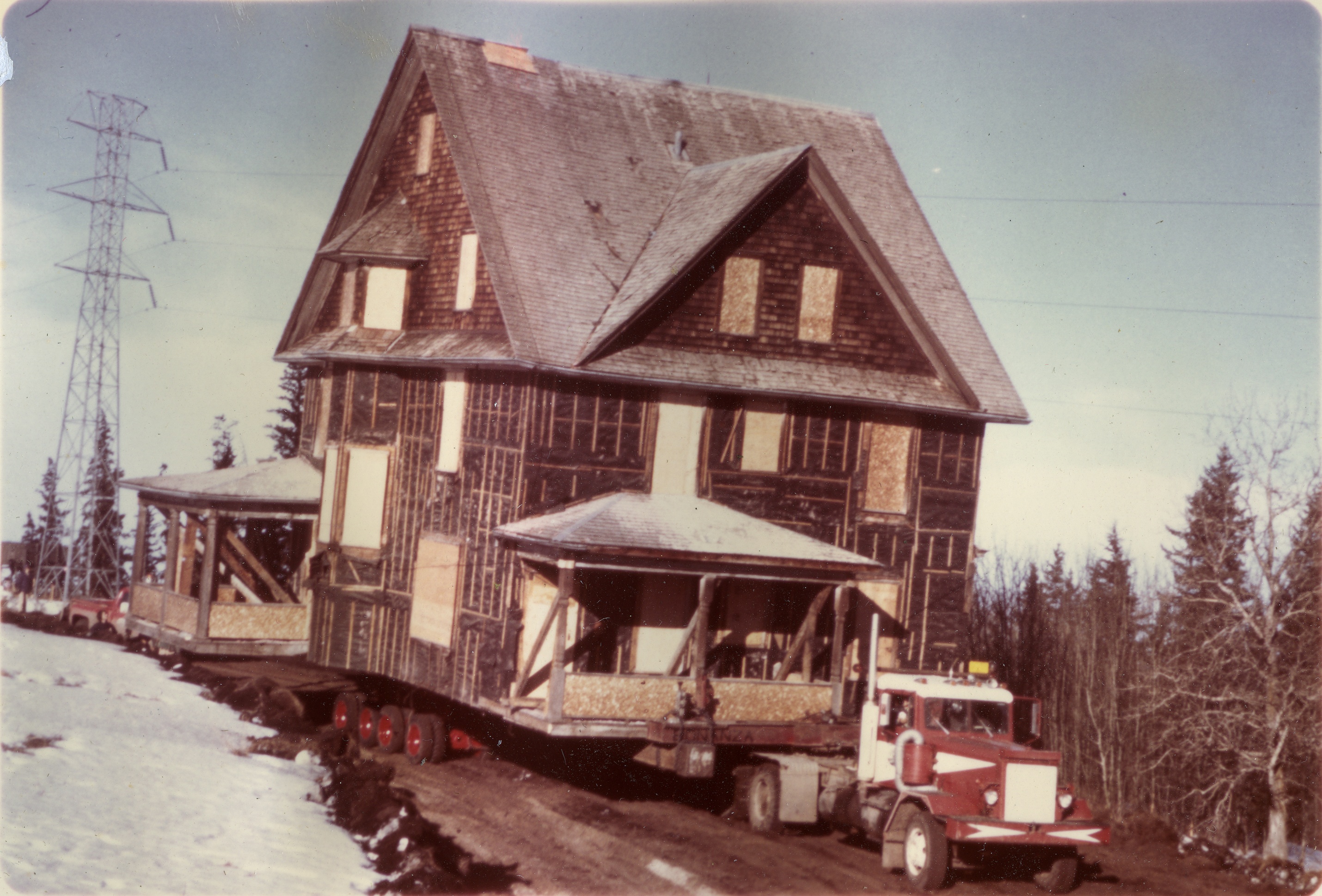It’s been four decades since the monumental move of the Cronquist House from West Park across the Red Deer river to Bower Ponds took place.
It was back in 1912 that Emmanuel Pettersen Cronquist, originally from Sweden, finished work on the house.
In 1886, he married Hilda Carlsdater in Varmland, Sweden. In 1892, he traveled to western Canada to look for new opportunities. He returned the following year, settling in the Burnt Lake area.
In 1894, Hilda sailed to join him, (tragically, they lost two sons on that journey to Canada).
In the fall of 1901, the Cronquists bought land in what is now the West Park subdivision. Emmanuel proved to be a successful businessman with extensive farming and livestock operations, so eventually it was decided that a prominent new home was in order.
“It stood near the high riverbank, so that the house could be seen across the Red Deer valley,” said local historian Michael Dawe. It was also located next to the old Calgary-Edmonton Trail (now part of 43 St.) so that many travelers would notice it as they passed by.”
When Elias, the last surviving member of the family, passed away in June 1974, the old house stood vacant for some time.
The house was eventually acquired by the Red Deer International Folk Festival Society (now the Red Deer Cultural Heritage Society).
“The house was really meant to be a showpiece,” said Dawe. “It was meant to be beautiful, it was meant to be attractive and it was meant to show that Mr. Cronquist had done very well.” The family also owned in excess of 1,000 acres of land.
“It you looked up to the west bank there was this gigantic house with a turret – almost castle-like. It really was a landmark.”
According to the Red Deer Cultural Heritage Society, the home is described as a Victorian-style farmhouse.
“Through the years it fell into disrepair, and it was not until the 1980s that it was renovated. In 1976, the house was rescued by the Red Deer International Folk Festival Society and was brought across the Red Deer River to where it stands today. A special ‘road’ was built down the south bank. And of course, even with the bricks removed, there was a formidable weight to the house.
“Once they had decided to save the house, the plaster and brick facing had to come off. The interior decorations of the house are new although reminiscent of the era the house was built in and the beautiful and extensive woodwork is original.”
Elizabeth and David Plumtree were a part of the Red Deer International Folk Festival Society that worked so hard to see the house both saved and ultimately moved to the site that its located at today.
Others at the time, and this is by no means an exhaustive list, included Hans Mathiesen, Bob Jewell, Bob and Effie McGregor, Betty and Stan Wulff and Bruno Stephan. John Murray’s contributions as an architect were also essential to the success of the project and the house was transported by Swede Tronnes of Bonanza Movers.
“We had a passion – all of us did – to retain this beautiful old house,” said Elizabeth, who is currently the vice chair on the board of the Red Deer Cultural Heritage Society. “A lot of people felt that way.”
As mentioned, a road was built along the bank and the house was moved down the slope and across the river at one of its more shallow spots near the present day Bower Ponds – all in about one hour. “It weighed 70 tonnes,” said David, adding that the house was first placed beside its current location for several months as a basement was dug. Moving day was March 27th, 1976.
Today, the house looks like it has simply been in the spot since it was first built – in fact, it’s tough to imagine a more ideal setting for the home, nestled in the picturesque Bower Ponds area.
At the time the house was moved, however, the area was essentially composed of gravel pits – the landscaping and transformation was yet to come.
As to the restoration of the home itself, multitudes of volunteers helped out in virtually every way, from trades and construction professionals to citizens who simply donated their time to help out in any way they could.
Today, original items in the house include Elias’s chair and an enormous cabinet that stands on the main level. There are also portraits of Emmanuel and Hilda in the large living room area on the main floor as well.
The house is used for community and private events, and operates as a tea house during the summer. The house also provides a focal point for the annual Canada Day celebrations.
Ultimately, as Dawe points out, it really couldn’t have been placed in a better ‘second’ home.
“A beautiful Edwardian landmark was restored and a beautiful all-season park area was established.”
editor@reddeerexpress.com



